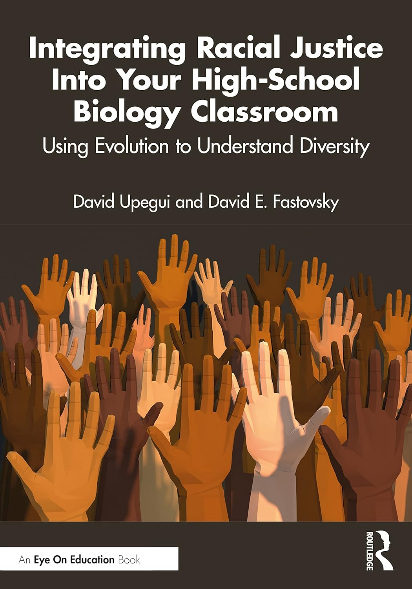[Review] Integrating Racial Justice into Your High-School Biology Classroom
"[This book] is an excellent primer for those who would like to educate themselves on the complex historical interplay between history, science, and racial justice," our reviewer writes.
"While bad (e.g., specious) science has historically oppressed people, good (e.g., robust) science can actually liberate them” (page 183). This passage, from the conclusion of Integrating Racial Justice into Your High-School Biology Classroom, succinctly summarizes the book’s thrust.
 David Upegui (a science teacher) and David E. Fastovsky (a paleontologist) open their book with the argument that evolutionary theory is the best place to integrate racial justice into the K–12 curriculum. High school students are at the right developmental stage to discuss racial justice, and the history of evolution provides plenty of examples of specious and misappropriated uses of science for racial discrimination and oppression as well as the opportunity to highlight the nature of science and its self-correcting properties. They use the frameworks laid by critical scholars such as Paulo Freire, Henry Giroux, and Derek Hodson to argue that the purpose of general education, and science education specifically, is for students to use literacy for empowerment and liberation. By gaining an understanding of what modern evolutionary theory says about humanity’s diversity and interconnectedness, students can come to see how bad actors in the past relied on ignorant or biased assumptions to create false racial categories and stereotypes.
David Upegui (a science teacher) and David E. Fastovsky (a paleontologist) open their book with the argument that evolutionary theory is the best place to integrate racial justice into the K–12 curriculum. High school students are at the right developmental stage to discuss racial justice, and the history of evolution provides plenty of examples of specious and misappropriated uses of science for racial discrimination and oppression as well as the opportunity to highlight the nature of science and its self-correcting properties. They use the frameworks laid by critical scholars such as Paulo Freire, Henry Giroux, and Derek Hodson to argue that the purpose of general education, and science education specifically, is for students to use literacy for empowerment and liberation. By gaining an understanding of what modern evolutionary theory says about humanity’s diversity and interconnectedness, students can come to see how bad actors in the past relied on ignorant or biased assumptions to create false racial categories and stereotypes.
Through a series of suggested activities with accompanying articles and videos featuring scientists such as Joseph L. Graves Jr. (a member of NCSE’s board of directors) and Agustin Fuentes, Upegui and Fastovsky demonstrate ways in which these insights may be discussed in connection with teaching about evolution. These lessons also highlight the interdisciplinary nature of racial justice by combining the nature of science, specific evolutionary content, and an investigation of the historical, political, and economic factors that contributed to the past and present marginalization of certain groups in the United States and around the world.
The second half of the book provides teachers who choose to use these lessons an in-depth understanding of the history of racial oppression in the United States from the 17th century to the present, the history of “scientific” racism used to justify the trans-Atlantic slave trade and Jim Crow laws, the history of the development of evolutionary theory from before Darwin up to the present, and an overview of pedagogical practices for including racial justice in biology classes. While not all teachers will be willing or able to use the lessons in this book in their classrooms, it is an excellent primer for those who would like to educate themselves on the complex historical interplay between history, science, and racial justice.






